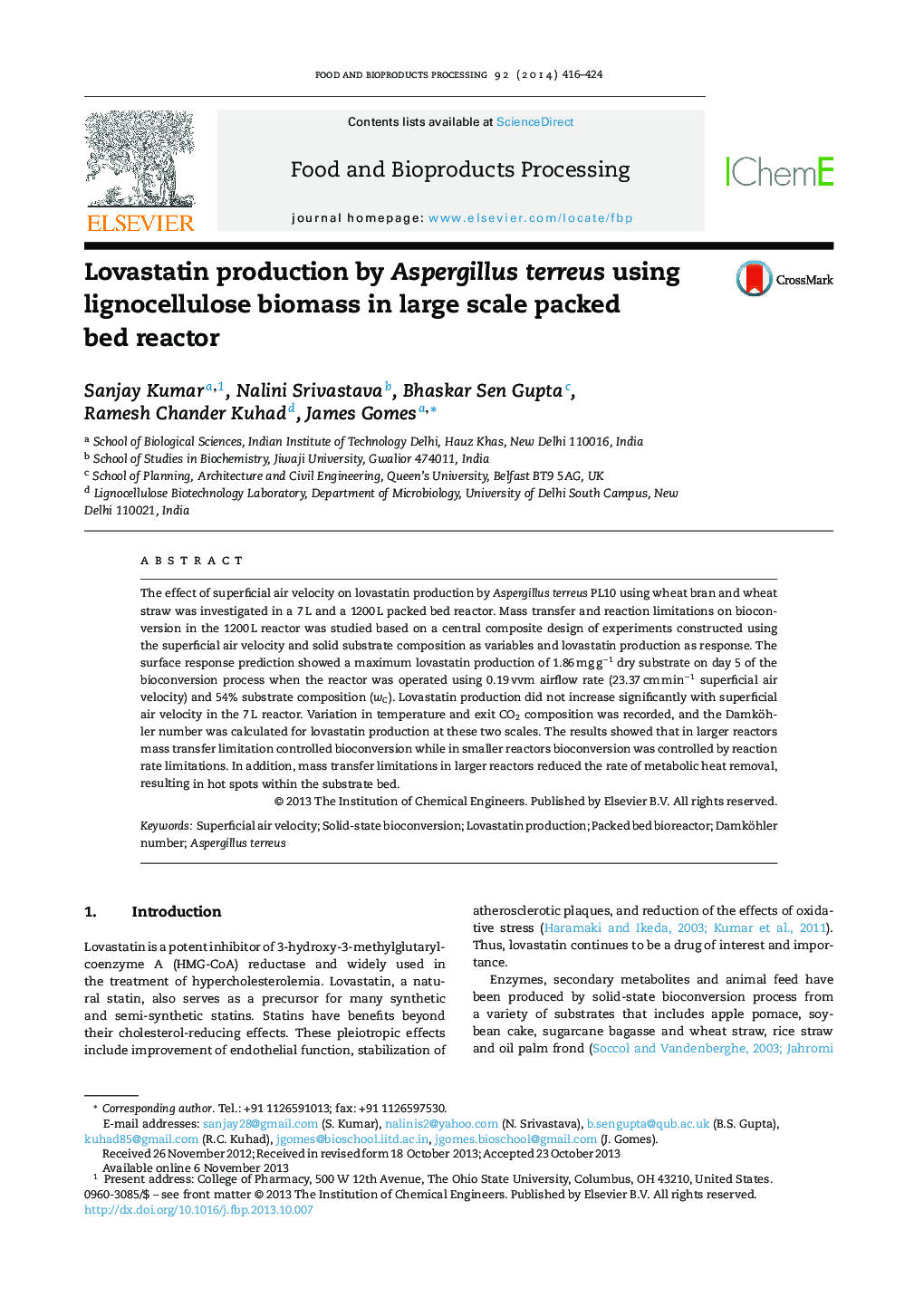| کد مقاله | کد نشریه | سال انتشار | مقاله انگلیسی | نسخه تمام متن |
|---|---|---|---|---|
| 18978 | 43038 | 2014 | 9 صفحه PDF | دانلود رایگان |

• Lovastatin production 2.74 mg g−1 dry substrate in 7 L and 2.13 mg g−1 in 1200 L SSF bioreactor.
• Mass transfer and reaction limitations on bioconversion in the 1200 L reactor was studied.
• Variations in temperature, CO2 evolution and Damköhler number observed.
• 1.86 mg g−1 dry substrate of lovastatin at the operating condition of 0.19 vvm airflow rate and 54% substrate composition (wC) after day 5.
The effect of superficial air velocity on lovastatin production by Aspergillus terreus PL10 using wheat bran and wheat straw was investigated in a 7 L and a 1200 L packed bed reactor. Mass transfer and reaction limitations on bioconversion in the 1200 L reactor was studied based on a central composite design of experiments constructed using the superficial air velocity and solid substrate composition as variables and lovastatin production as response. The surface response prediction showed a maximum lovastatin production of 1.86 mg g−1 dry substrate on day 5 of the bioconversion process when the reactor was operated using 0.19 vvm airflow rate (23.37 cm min−1 superficial air velocity) and 54% substrate composition (wC). Lovastatin production did not increase significantly with superficial air velocity in the 7 L reactor. Variation in temperature and exit CO2 composition was recorded, and the Damköhler number was calculated for lovastatin production at these two scales. The results showed that in larger reactors mass transfer limitation controlled bioconversion while in smaller reactors bioconversion was controlled by reaction rate limitations. In addition, mass transfer limitations in larger reactors reduced the rate of metabolic heat removal, resulting in hot spots within the substrate bed.
Journal: Food and Bioproducts Processing - Volume 92, Issue 4, October 2014, Pages 416–424